Russian propaganda is gearing up for the U.S. election in November, spreading conspiracy theories about the FBI’s alleged plans to assassinate Donald Trump and claiming that the U.S. dollar has slid in value against other major global currencies under Joe Biden’s watch. Both claims, it goes without saying, are false.
Valentin Bogdanov, U.S. correspondent for the Russian news show Vesti Nedeli (lit. “News of the Week”), recently purported to explain America’s upcoming presidential election by pointing at Donald Trump's campaign van, currently making its way across the country:
“Trump autographs, MAGA hats. The Republican looks at the visitors of the traveling museum named after himself from photos and badges — there are so many of them that they are already pinned to the ceiling. There’s a place for Biden here, too. He’s on the trillion-dollar bill — a symbol of rampant inflation.”
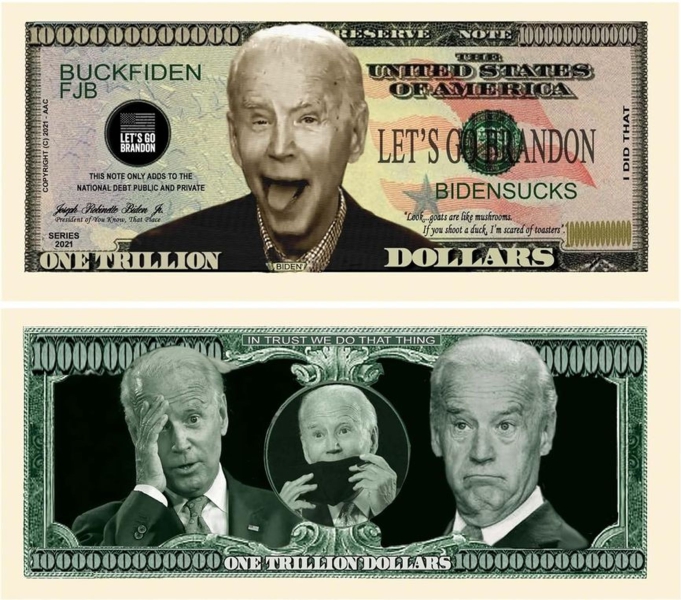
The website of the Russian Television and Radio Broadcasting Company (VGTRK), where the text of the story is published, decided to soften the end of the quote:
“There's a place for Biden here, too — on the dollar bill, which has seriously depreciated under his watch.”
In the original report, the correspondent simply describes the rhetoric of the Trump campaign — without assessing the degree to which it corresponds to economic reality. In the text version, however, the editorial already states directly: things are bad and the dollar has fallen in value.
Unsurprisingly, Russian state propaganda’s assessment of American economic ill health turns out to be less than accurate. Consider the dollar's exchange rate against a collection of the world’s most reliable currencies.
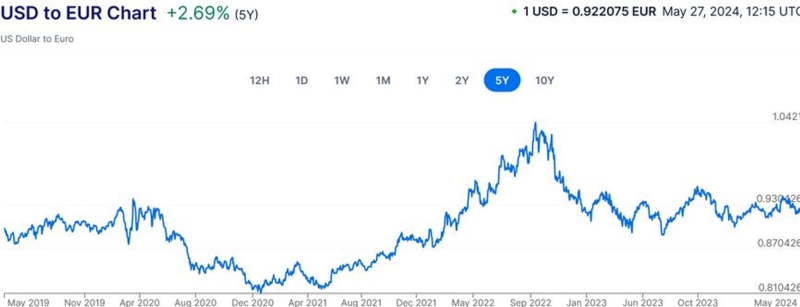
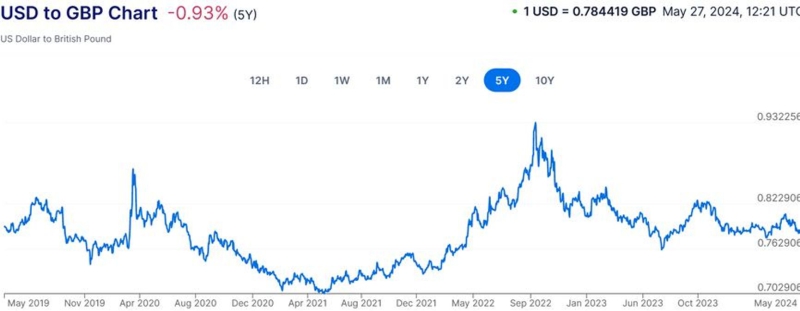
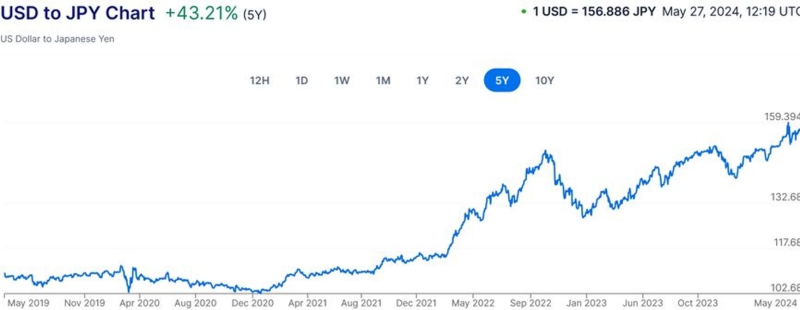

Biden's inauguration took place on January 20, 2021. As we can see, during his term, the dollar's value rose significantly against the euro, the British pound, and the Japanese yen, while it remained about the same against the Swiss franc.
Inflation under Biden is slightly higher than it was under Trump, but it is falling: 7% in 2021, 6.5% in 2022, and 3.4% in 2023. Here's a breakdown of the different types of inflation rates and their effect on a country's economy from the Russian website Financial Culture — a financial literacy project sponsored by the Russian Central Bank:
“What kind of inflation is there? Low inflation is up to 6% per year. Such inflation is comfortable for both consumers and entrepreneurs. And at the same time, it allows the economy to develop. This is the level at which most countries try to maintain inflation.
Moderate inflation varies from 6 to 10% per year. These levels are dangerous, as they can get out of control — and turn into high inflation.
High (or “galloping”) inflation totals from 10 to 100% per year. It creates instability in the market, as consumers and companies cannot plan their future.
Hyperinflation is when prices rise by hundreds and thousands of percent. In especially severe cases, people give up money and switch to barter. Hyperinflation usually occurs during severe crises and wars.”
Economists explain the rise in inflation in the first two years of Biden's term as a predictable consequence of the COVID-19 pandemic: after a decline in economic activity due to lockdown restrictions, demand for goods and services began to grow once regulations were lifted, leading to higher prices.
Here’s what the Russian economics website Finam wrote in December 2023:
“Inflation in the U.S. turned out to be temporary (transitory) after all. For two months, personal consumer expenditure (PCE) indexes hovered near zero. Annualized rates have fallen to around 3%. Inflation expectations in the government bond market are anchored at just above 2% for 5 years.
The 2021-22 inflationary episode was particularly notable and temporary in the durable goods sector. Now in its 6th month of deflation and already -2% for the year, as it has been for all 20 years in the pre-crash period. The reasons for inflation are due to demand shifting out of the service sector, and logistics problems in 2020-22. Recreational goods and vehicles (+60% real to $0.8 trillion) saw the biggest demand growth — which makes sense given that travel and recreation were restricted. But all durables only account for a 13% share of the PCE.
Total spending and the U.S. budget deficit are meaningfully higher than before COVID. But non-interest spending is down for the third year in a row: 2019 — 4.1, 2020 — 6.2, 2021 — 6.5, 2022 — 5.8, 2023F — 5.7 trillion USD. That's the main reason inflation is down, even though deficits are high. No increase in spending means no inflation.”
Oddly enough, Trump's campaigning seems to be working, despite the fact that its rhetoric is not in line with economic reality. According to a Harris Poll commissioned by the British newspaper The Guardian, more than half of Americans surveyed believe that the U.S. economy is in recession, even though the country’s GDP is actually growing.
Here’s what The Guardian’s recent report said:
“Nearly three in five Americans wrongly believe the US is in an economic recession, and the majority blame the Biden administration, according to a Harris poll conducted exclusively for the Guardian. The survey found persistent pessimism about the economy as election day draws closer.
The poll highlighted many misconceptions people have about the economy, including:
- 55% believe the economy is shrinking, and 56% think the US is experiencing a recession, though the broadest measure of the economy, gross domestic product (GDP), has been growing.
- 49% believe the S&P 500 stock market index is down for the year, though the index went up about 24% in 2023 and is up more than 12% this year.
- 49% believe that unemployment is at a 50-year high, though the unemployment rate has been under 4%, a near 50-year low.
Many Americans put the blame on Biden for the state of the economy, with 58% of those polled saying the economy is worsening due to mismanagement from the presidential administration.
The poll underscored people’s complicated emotions around inflation. The vast majority of respondents, 72%, indicated they think inflation is increasing. In reality, the rate of inflation has fallen sharply from its post-Covid peak of 9.1% and has been fluctuating between 3% and 4% a year.
In April, the inflation rate went down from 3.5% to 3.4% – far from inflation’s 40-year peak of 9.1% in June 2022 — triggering a stock market rally that pushed the Dow Jones index to a record high.
A recession is generally defined by a decrease in economic activity, typically measured as gross domestic product (GDP), over two successive quarters, although in the US the National Bureau of Economic Research (NBER) has the final say. US GDP has been rising over the last few years, barring a brief contraction in 2022, which the NBER did not deem a recession.”
As is tradition, the Russian Vesti Nedeli correspondent did not ignore the “awkward situation” Biden was said to have found himself in following a speech to graduates of the U.S. Military Academy at West Point. However, the notion that Biden had misspoken came from the Russian program’s apparent mistranslation of the word “fall.” The text quoted the president as saying:
“There are no American soldiers in Ukraine, and I am determined to keep it that way. But we stand with Ukraine and we will continue to support Ukraine. Putin wants NATO to be fragmented. I met with him after he was elected president, and we talked about exactly that. The collapse… he tied that collapse, he decided… look, I shouldn't go into details, it worries me a little bit.”
The text seems completely incoherent — but only in Bogdanov's interpretation. Based on context, it is clear that Biden was not talking about any sort of “collapse,” but was instead referring to the season that falls between summer and winter. What the president actually said, in English, made significantly more sense:
“There are no American soldiers at war in Ukraine. I’m determined to keep it that way. But we are standing strong with Ukraine, and we will stand with them. We’re standing against a man who I’ve known well for many years, a brutal tyrant. We may not — we — and we will not — we will not walk away.
Putin was certain that NATO would fracture. I remember them — right after being elected president, before — right after I was sworn in, and we talked about this very issue. In the fall, he had tied — that fall, he decided to — look, I shouldn’t get into this, probably — […] — because it gets me a little excited. But Putin was certain that NATO would fracture.
I said to him in Switzerland that, ‘You want the Finlandization of Ukraine; you’re going to get the Finlandization — you’re going to get the NATO-ization of Europe.’ He had a brazen vision, which we stepped up and stopped. Instead, today, the greatest defense alliance in the history of the world is stronger than ever. Finland and Sweden are our newest members, and they’re tough.”
Interestingly, Biden’s remarks did likely contain a minor inaccuracy, as his first telephone conversation with Putin did not take place in the fall, but on January 25, 2021. However, it is likely that Biden was referring to the statements of the Russian authorities — in particular, Putin's speech at an extended meeting of the Foreign Ministry Board in November 2021 — that preceded the Kremlin’s so-called “ultimatum,” which was published in December 2021. In any case, Biden certainly did not utter the meaningless set of words quoted in the Vesti Nedeli story.
Bogdanov also mentions a case in which Democrats purportedly compared Trump's campaign to Nazi propaganda. In a video since-deleted from Trump’s Truth Social page, fictional newspaper headlines announcing a Trump election victory include the phrase “creation of a united Reich.” Biden condemned the video for using “the language of Hitler’s Germany.” However, the entire episode appears to have been the result of a misunderstanding: a Turkish designer working on the video simply failed to notice the dangerous phrase on the newspaper page he was using as a background.
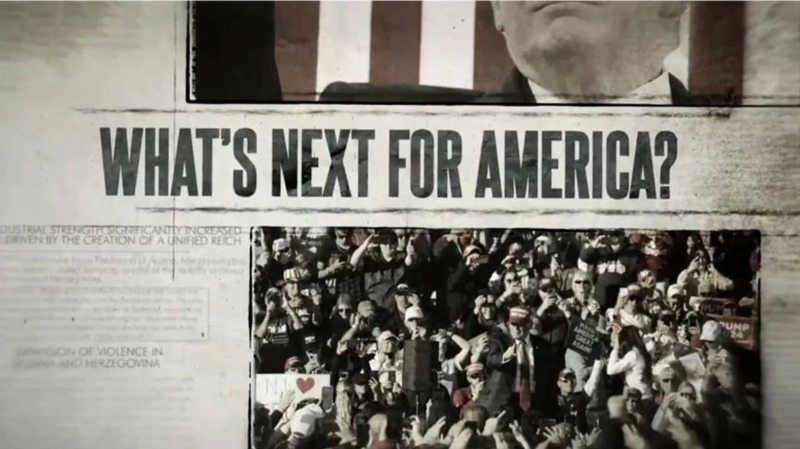
But mentioning the “Nazi” story allowed the Russian reporter to get to the most sensational element of his account: the accusation that Biden’s government was planning to assassinate the president’s chief political rival. According to Bogdanov, “Marjorie Taylor Green's words, against the backdrop of everything else, no longer come across as political cliquishness.”
The Vesti Nedeli report then quotes from the Congresswoman’s May 21 social media post:
“The Biden DOJ and FBI were planning to assassinate Pres Trump and gave the green light.
Does everyone get it yet???!!!!
What are Republicans going to do about it?
I tried to oust our Speaker who funded Biden’s DOJ AND FBI, but Democrats stopped it.”
Unsurprisingly, Bogdanov’s report failed to provide sufficient context for the unfounded accusation, as Green’s claims were based on nothing more than a single phrase found in court documents describing the FBI’s preparations for a search of Trump’s Mar-a-Lago residence in August 2022. In that case, officers tasked with executing a legal search warrant were given the standard approval to “use deadly force” in the event that they were met with resistance.
After the document was published, Green claimed Attorney General Merrick Garland “effectively ordered the assassination of President Trump.” However, in a Fox News appearance on May 22, Trump campaign surrogate Pam Bondi stated that, “The president wasn't at Mar-a-Lago [at the time of the search]. That was why they chose to execute the search warrant then.”
Outside of Trump's most loyal supporters, hardly anyone in America took Green’s accusation seriously. As was pointed out by The Daily Beast, the wording about the use of weapons is standard, and it also appeared in similar FBI documents pertaining to a search of Joe Biden's home. Besides, if there really were a plan to assassinate Trump during the search, the FBI would not have chosen a day on which Trump was known to bet at his residence in New York.

